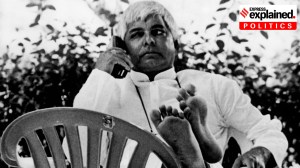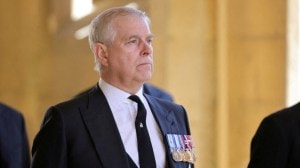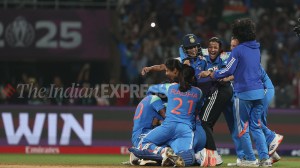The President who kept reminding the nation of millions unheard
Kocheril Raman Narayanan, who as India’s first Dalit President saw himself as a “custodian of the Constitution” while bringin...

Kocheril Raman Narayanan, who as India’s first Dalit President saw himself as a “custodian of the Constitution” while bringing in a quiet assertion to Rashtrapati Bhavan reminding the nation of the “millions unheard,” died of acute pneumonia and renal failure today.
He was 85. He is survived by his wife Usha Narayanan and daughters, Chitra and Amrita.
His election to the country’s highest office was not only a testament to the maturing of India’s participative democracy but also a tribute to his personal struggle. From a childhood when he was forced to stand on a bench for his inability to pay school fees—because his family in Kerala did not have enough money—to his college days when for meals, he had to depend on a lawyer friend. From getting a degree at the London School of Economics to his stint as a journalist, academic, diplomat, and Member of Parliament, the country’s vice president in 1992 and finally its president, it was the story of a man who had made a rare journey from poverty to power.
P V Narasimha Rao zeroed in on him as the vice presidential choice of the ruling Congress in 1992. Those were the days when post-Mandal politics had made the choice of a Dalit as vice president or president more appropriate than ever. Rao considered other names—B Shankaranand was his lifelong friend, Margatham Chandrasekhar had been a senior minister in the government. But finally, Rao chose Narayanan as the man most suited for the job.
Years earlier, Harold Laski had recommended him as a man whose services Jawaharlal Nehru should utilise when Narayanan returned from England to join the foreign service in 1949. That letter was to later became a valuable memento for Narayanan.
When Rao took over as Prime Minister in 1991, he sent word to Narayanan that he wanted him in the government. Narayanan had been minister earlier in 1985-86. But K. Karunakaran, who was then Chief Minister of Kerala and a senior leader in the party, threatened a dharna, and prevented it. A year later, when Rao sent Narayanan word that he was considering him for Vice Presidentship, Narayanan simply could not believe it.
This time Karunakaran could do little—he had gone to go to the US for treatment after an accident.
In 1997, when Narayanan became President, the elevation wasn’t a mere accident. For him, the role of “custodian of the Constitution” was a demanding and challenging one. In fact, if there was one person who stood in the way of a change in the Constitution—the NDA began an exercise to review the Constitution and at that time various ideas such as indirect elections and presidential system were in the air—it was Narayanan.
He spoke sharply against the NDA’s preoccupation with “political stability”. In his addresses to the nation, he kept reminding the country to listen to those whose voices are not heard, the poor and the disnefranchised.
He did not see himself either as a “rubberstamp” President or a “copybook” one, or as an “emergency light” which comes on at the time of a crisis, which is the way R.Venkatraman had described himself. Narayanan preferred to refer to himself as a “working” President. And yet, Narayanan did not shy away from sending back files to the government when he disagreed with a decision because he saw it as being outside the realm of constitutionality. The most famous case was of the dissolution of the UP Assembly in 1997 when I K Gujral was Prime Minister.
Mulayam Singh Yadav wanted the dissolution of the UP assembly ruled by the Opposition. The United Front Government recommended it, the President sent the file back for reconsideration. The Cabinet met for over 20 hours on the issue—probably the longest in independent India’s history—and it finally decided to abide by Narayanan’s advice, earning the then President accolades all over the country.
But Mulayam never forgave him. Soon after this event, there was an incident related by eyewitnesses, of Narayanan and Mulayam, who was then Defence Minister, coming face to face at Rashtrapati Bhavan. One was coming out of the room after seeing Yasser Arafat who was visiting India at the time and the other was going in. Neither acknowledged each other but it was Narayanan who stepped off the red carpet to avoid what might have been a collision.
It was a telling incident about Narayanan’s personality—non-confrontationist in personal relations and quietly assertive on public issues. Some called him a “silent protestor”.
The mid-seventies saw a shift of policy towards China and Indira Gandhi took the initiative to ease relations with the northern neighbour. She appointed Narayanan as ambassador in 1976. He had a Left image, had been in charge of the China desk in the MEA and she was looking for a career diplomat, the idea being to resume the relationship in a formal way.
Narayanan presided over the thaw in the Indo-China relations, laying the foundation for the famous handshake between Rajiv Gandhi and Deng Xiaoping in 1988.
In the final months of his term, he was very unhappy with the violence in Gujarat following Godhra, and revealed recently that he had written to then PM Atal Bihari Vajpayee, though the correspondence is yet to be made public.
He was criticised for recommending that the judiciary, too, should reflect the social mix of society, a recommendation that was then twisted by certain sections as meaning that he was for reservations in the highest court.
Here was a man of integrity who made it to the top. He belied the criticism of all those who argue that “merit” would be compromised if a Dalit was made President. Here was a President who spoke openly about the “big divide”, lending his ear to those who did not have a voice.
And now, it is farewell to him.
|
Narayanan remembered
|
||||
|
• KR Narayanan was an able administrator with sober views and gentle manners. As India’s ambassador to the US, he proved his mature wisdom by tactful handling of difficult problems. As President, KR Narayanan was a model of fairness and wisdom. India has lost one of her noblest sons. |
||||



- 01
- 02
- 03
- 04
- 05




























